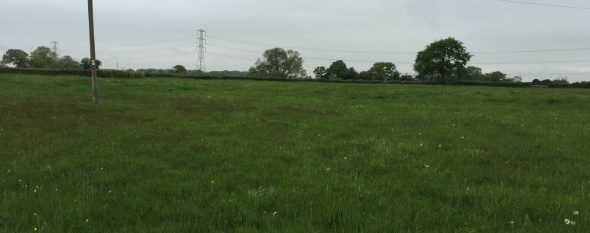Residential Development, Higher Bartle, Preston, Lancashire
Case Study Reference: 15-05-06
Planning Authority: Preston City Council
Planning Reference: 06/2016/0002
Synopsis:
In order to demonstrate that after the development the site could not be classified as ‘contaminated land’ under Part 2A of the Environmental Protection Act a Phase I desk study report was required to support the application for the erection of a dwelling. The site was occupied by an agricultural building, the past use of the site have the potential to impact site soils.
 A Phase I desk study report assess the potential for a site to be impacted by contamination, this is undertaken by researching the history of the site and the surrounds as well as a review of information held by regulatory bodies and a site visit.
A Phase I desk study report assess the potential for a site to be impacted by contamination, this is undertaken by researching the history of the site and the surrounds as well as a review of information held by regulatory bodies and a site visit.
The history of the site and surrounds w ere researched using a combination of Ordnance Survey (O.S.) maps, street level imagery and aerial plates, this revealed the site was initially part of an orchard with a pond in the central area, by 1955 the pond had been in-filled and the orchard was no longer identified on the 1960 map. Street level imagery confirmed the site comprised of open land.
ere researched using a combination of Ordnance Survey (O.S.) maps, street level imagery and aerial plates, this revealed the site was initially part of an orchard with a pond in the central area, by 1955 the pond had been in-filled and the orchard was no longer identified on the 1960 map. Street level imagery confirmed the site comprised of open land.
An electricity substation was noted on the south eastern boundary on the 1976 map, which was likely present from prior to the 1960 map.
The planning history of the site was reviewed, no salient information was obtained.
Data provided by regulatory bodies identified the electricity substation, cuttings and a pit the north west as well as a pond to the south
 On completion of the desk based research a site reconnaissance
On completion of the desk based research a site reconnaissance visit was undertaken, this confirmed the site was open land, the electricity substation was inspected and was an open substation.
visit was undertaken, this confirmed the site was open land, the electricity substation was inspected and was an open substation.
On completion of the walkover survey a qualitative risk assessment was undertaken on the potential sources of contamination identified in the desk study report in order to determine if any warranted further investigation, this concluded that the potential risks from the in-filled pond warranted further works.
The proposed works comprised of a trial trench through the in-filled pond to assess the risks posed by the soils as well as the incorporation fo gas protection measures into the buildings.
The report was submitted to support the application, the recommendations were accepted and the condition partly discharged.




